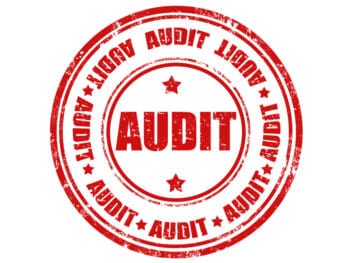If your company is considering placing its general and/or auto liability with your worker’s compensation third-party administrator, you want to ask: “How does MY TPA handle these areas?” before you decide. Make sure they do ALL of these things.
Reserving
Proper case reserving is an essential part of proper claim handling. To meet the clients’ expectations of high-quality service, reserves must be timely and accurately project the probable ultimate cost of the claim. A clear reserve rationale is documented to support the reserve amount.
1. Initial Reserves
Within 72 hours after receipt of loss notice or according to client/carrier requirements established the initial reserve. Consult with the client and/or carrier on the reserve amount when required by service agreement. Separate reserves are set for loss and expenses, as necessary. No reserves are set on record-only claims.
2. Subsequent Reserves
The claim examiner and team manager continual review reserves by for appropriateness. Reserves are adjusted within 30 days when a significant event occurs. Be sure to follow all internal authority guidelines.
3. Reserve Documentation
The claim examiner documents a clear and concise rationale for any reserve change in the file notes. Key components affecting the risk exposure or case value are outlined. A reserve worksheet, when required by the client and/or carrier, is completed within 30 days of assignment.
Litigation Management
The claims examiner is primarily responsible for active case management of litigated files. The goal is to employ a multifaceted litigation management program designed to minimize legal costs.
Litigation management involves initial contact and subsequent interaction with defense counsel. The claims examiner makes referrals to a defense counsel outlining the issues, relationship of named parties, and recommendations for handling.
The claims examiner’s primary responsibilities are:
1. How law firms selected by the client/carrier are used.
2. Suggesting appropriate defense counsel if asked by client/carrier.
3. Instructing the defense attorney to acknowledge the receipt of the referral letter within five business days of receipt or sooner depending on the urgency of the filing deadline.
4. Reaching agreement with defense counsel on all assigned tasks.
5. Considering timely, proactive case resolution strategies.
6. Developing discovery strategies and budget with defense counsel.
7. Use of alternative dispute resolution, settlement days, special pending case procedures/settlement committees, mediation, structured settlements, and batching sessions with attorneys.
8. Direct negotiation with claimant’s attorney.
9. Active participation in decisions regarding motions, discovery, evaluations etc.
10. Making timely, realistic offers of settlement, in coordination with defense counsel.
11. Instructing defense counsel to follow all instructions in the litigation management guidelines.
Strategic Plan of Action
Each claim has unique characteristics and is managed based on the issues and specific circumstances surrounding the claim. The Strategic Plan of Action focuses on key components of the claim to drive to the best claim outcome. These components are documented for quality claim handling processes and communication relevant to claims strategy and file resolution/closure.
The claims examiner documents a Strategic Plan of Action for the following components on all liability claims: case summary, subrogation/contribution/fraud indicators, issues, goal, liability, timeline, litigation management, plan, reserves.
Document the plan of within 30 days of receipt of the assignment. Then, update the plan when significant developments occur changing the objective or the steps appropriate to achieve claim resolution; planned activities are completed but the claim remains unresolved; the timelines change for completion of stated objectives.
File Disposition/Evaluation/Settlement
The claims examiner/case manager’s primary responsibility is the fair and reasonable resolution of claims.
Every time a file is reviewed the examiner must consider file closure and address action plans to effect closure. Include these elements in claim resolution activities.
1. Evaluate early in the claim whether a settlement will be owed.
2. Review reserves and authority/consultation levels for client and carrier reporting.
3. Obtain settlement authority from customers and carriers when appropriate.
4. Obtain any necessary medical reports needed to evaluate settlement.
5. Use medical cost containment on appropriate cases.
6. Determine the settlement value of the claim and document the reasoning, including financial consideration for cost of defense.
7. Acknowledge all lawsuits to the client as soon as practicable, but always within five business days.
8. Confirmed in writing all denials of liability, always in compliance with applicable state laws regarding Unfair Claim Practices Acts in compliance with the account/carrier bulletins.
9. Conduct all claim discussions and negotiations in good faith with the client, claimant or the legal representative.
10. Use inter-company arbitration, special arbitration and other forms of alternative dispute resolution (ADR) to resolve disputes on appropriate cases.
11. Utilize settlement tools, as appropriate, such as – advance payment, open-end release, structured settlement, etc.
12. Pay all claims within three business days after acceptable proof of claim is received by the company and, where applicable, payment pre-funding from the client/carrier is received.
13. Final settlements of claims are accompanied by legally appropriate proofs and releases (the use of the proof or release depends on the type of claim and the situation).
File Documentation
A third-party administrator is in the business of providing information. The TPA provides a quality service by making sure all data and information provided is accurate and timely. Therefore, the integrity of data is very important.
Claim files communicate the status and direction of the claim. As a “living document” the file reflects the most current key information about the claim; contain up-to-date Strategic Plan of Action; are revised and updated whenever there is a new development.
File notes reflect a chronological record of claim activity throughout the life of the claim file, using clear summaries of claim activity, recorded in a timely manner. Entries accurately document written correspondence contained in the paper file. And, finally, entries reflect the input and direction of the team manager, service center manager or senior risk analyst, as needed.
Communication and Service
Your TPA and staff communicates in a professional and courteous manner, working closely with clients and carriers to develop claim strategies. Telephone calls are returned as soon as possible and always within one business day. Written communications are answered as soon as possible and always within five business days. Keep clients/carriers informed regarding reserves, authority and case status as outlined in the client/carrier handling instructions.
Supervision
The team manager is responsible for all files handled by the file examiners in the unit and provides technical expertise, coaching and training to ensure quality claim service. The team manager performs a wide range of functions, many of which are time sensitive.
Within 72 hours the team manager provides initial appropriate direction. At the 30-day point, the manager reviews the assigned file and provides ongoing direction. At a maximum of 90-days the file is reviewed again and direction given.
A quality team manger oversees customer service/account management; internal and external consultation/information resources; classifies new claims; reclassifies any claims with changing complexity levels; and finally, assigns the file to the appropriate claim handler level.
Author Robert Elliott, executive vice president, Amaxx Risks Solutions, Inc. has worked successfully for 20 years with many industries to reduce Workers' Compensation costs, including airlines, health care, manufacturing, printing/publishing, pharmaceuticals, retail, hospitality and manufacturing. He can be contacted at: [email protected] or 860-553-6604.
Podcast/Webcast: How To Prevent Fraudulent Workers' Compensation Claims Click Here http://www.workerscompkit.com/gallagher/podcast/Fraudulent_Workers_Compensation_Claims/index.php
WC Books: http://www.reduceyourworkerscomp.com/workers-comp-books-manuals.php
TD Calculator: www.reduceyourworkerscomp.com/transitional-duty-cost-calculator.php
WC Calculator: http://www.reduceyourworkerscomp.com/calculator.php
Do not use this information without independent verification. All state laws vary. You should consult with your insurance broker or agent about workers' comp issues.

















